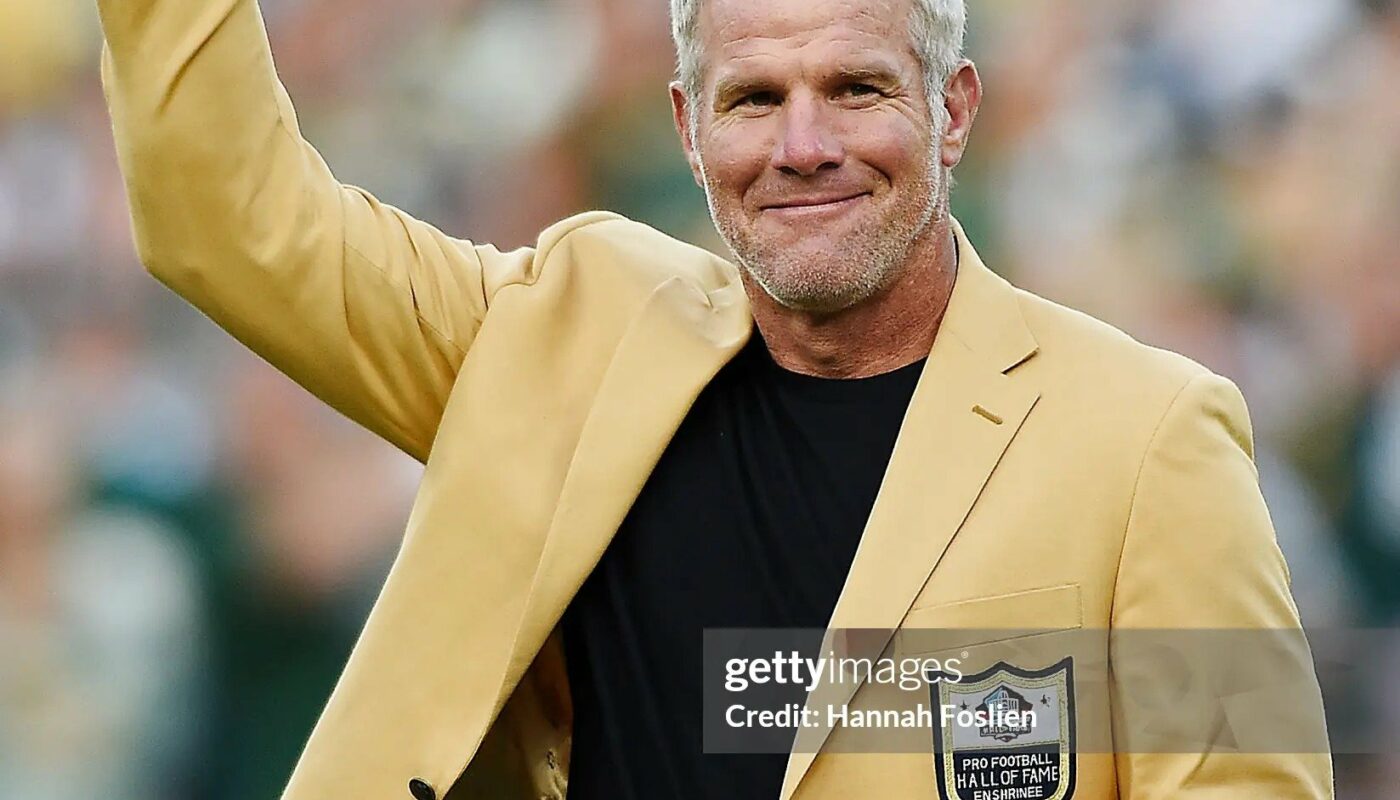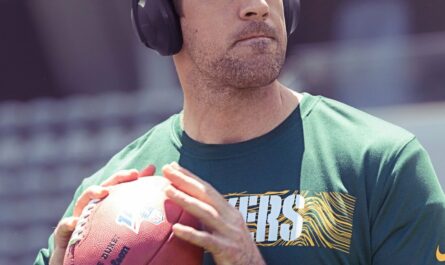Brett Favre: A Football Legend
[bg_collapse view=”button-orange” color=”#4a4949″ expand_text=”Show More” collapse_text=”Show Less” ]
Brett Lorenzo Favre was born on October 10, 1969 in Gulfport, Mississippi. Growing up, he showed athletic promise in multiple sports but ultimately cemented his legacy as one of the greatest quarterbacks to ever play in the National Football League (NFL). Over a storied 20-year career, Favre redefined what it meant to be a quarterback, setting countless records and cementing his status as a football legend.
While Favre found his greatest success on the gridiron, his athletic talents were evident from a young age across multiple sports. In high school at Hancock North Central in Mississippi, Favre stood out not just as a talented football player but also as a star baseball player and basketball player. He received scholarship offers to play both football and baseball at Southern Miss after graduating in 1987. Though he loved baseball, Favre chose to focus solely on football, seeing it as his best path to the professional level.
It didn’t take long for Favre’s football talents to emerge at Southern Miss. As a freshman, he won the starting quarterback job and led the team to an upset win over Florida State. Over his college career, Favre started every game for the Golden Eagles and put up gaudy stats that foreshadowed his future NFL success, completing over 60% of his passes for over 7,000 yards and 53 touchdowns. His stellar play caught the attention of NFL scouts, and he declared for the 1991 NFL draft after his junior season.
Despite his prolific college production, questions remained over Favre’s work ethic, decision making and arm strength entering the draft. These concerns caused him to fall to the second round, where the Atlanta Falcons selected him with the 33rd overall pick. However, Favre would never suit up for the Falcons, as just a few months later he was traded to the Green Bay Packers in one of the most lopsided trades in NFL history.
It didn’t take long for Favre to make an impact in Green Bay. After backing up veteran QB Don Majkowski for the first four games of the 1992 season, Favre was thrust into the starting role when Majkowski suffered an injury. Over the next few weeks, Favre silenced any doubters by leading the Packers on a memorable run, winning his first four starts including an iconic Monday Night Football game against the Pittsburgh Steelers. He finished his rookie season with 3,227 passing yards and an NFL-record 38 touchdowns, earning NFL Offensive Rookie of the Year honors and cementing himself as the new face of the Packers franchise.
Over the next decade in Green Bay, Favre established himself as one of the toughest and most durable quarterbacks to ever play. He started in a then-NFL record 253 consecutive games from 1992 to 2010, rarely missing time due to injury and playing through countless minor knocks that would sideline lesser players. His ironman streak spoke to his toughness and willingness to sacrifice his body for the team. On the field, Favre combined a rocket arm with improvisational playmaking skills that made him nearly impossible to gameplan against. He revolutionized the quarterback position by regularly extending plays outside the pocket and creating offense out of nothing with his legs and arm talent.
Statistically, Favre’s run with the Packers was unparalleled. He was voted to nine Pro Bowls and led the team to eight playoff appearances between 1992 and 2007. In that span he won three MVP awards in 1995, 1996 and 1997, joining Tom Brady as the only other player to win the award in three consecutive seasons. He also led the Packers to two Super Bowl appearances, winning it all in Super Bowl XXXI over the New England Patriots. By the time he retired (for the first time) after the 2007 season, Favre had set NFL records for career passing yards (61,655), career touchdown passes (442), career interceptions (288) and consecutive starts by a quarterback (253). His consistency, production and toughness established him as arguably the greatest Packer of all time and one of the finest quarterbacks in NFL history.
However, Favre’s final years in Green Bay were also marred by controversy. After contemplating retirement for several offseasons, Favre finally decided to hang up his cleats following the 2007 campaign. But shortly after announcing his retirement, he had a change of heart and wanted to unretire to keep playing. A messy public back-and-forth ensued between Favre and the Packers front office, who had already committed to young quarterback Aaron Rodgers as the starter and future of the franchise. Favre refused to report to training camp and reportedly feuded with Rodgers, sullying his legacy with Packers fans and creating a rift that lingers to this day.
Finally, in August 2008, Favre was traded by the Packers to the New York Jets for a conditional draft pick. Though past his prime at 38 years old, Favre enjoyed a solid season with the Jets, leading them to a 9-7 record and a playoff berth. However, they lost in the AFC Championship game, and Favre’s one-year stint in New York ended with more uncertainty about his future plans. Once again, Favre entertained retirement before ultimately joining the division-rival Minnesota Vikings in 2009 after a trade from the Jets.
Playing with the Vikings at age 40, Favre enjoyed perhaps his most improbable and storybook season. He started all 16 games and enjoyed one of the finest statistical seasons of his career, passing for 4,202 yards and an NFL-best 33 touchdowns. Favre led the Vikings to an NFC North division title and an appearance in the NFC Championship game, coming within a game of the Super Bowl. His magical 2009 season won him Comeback Player of the Year honors and showed he still had plenty left in the tank as he approached his 41st birthday.
The following 2010 season proved to be Favre’s final hurrah. Though he struggled with injuries and consistency at times, he still started all 16 games for the Vikings and led them to a playoff berth once more. In what would be the final game of his career, Favre threw for 246 yards and a touchdown in a playoff loss to the eventual Super Bowl champion Packers. He retired for good following the 2010 season, cementing over 20 years as one of the toughest and most durable quarterbacks to ever play the game.
When all was said and done, Favre retired as the NFL’s all-time leader in career passing yards (71,838), career touchdown passes (508), career interceptions (336) and consecutive starts by a quarterback (321). His ironman streak may never be matched, as will his gunslinger mentality and ability to improvise on the field. Off the field, Favre also distinguished himself as one of the most charitable athletes, donating millions to educational causes in his home state of Mississippi.
In his post-playing career, Favre has stayed out of the public spotlight for the most part but still maintains a strong connection to the game of football. He was inducted into the Pro Football Hall of Fame in 2016, his first year of eligibility. Favre also worked as a guest analyst for various NFL and college football broadcasts in recent years. Though his final years in Green Bay left a complicated legacy, Favre’s incredible career redefined what was possible at the quarterback position. His toughness, production and trailblazing style of play cemented him as arguably the greatest and most beloved player in Packers history and one of the finest to ever do it in the NFL. As one of football’s true ironmen and all-time greats, Brett Favre’s legacy will stand the test of time.
[/bg_collapse]



